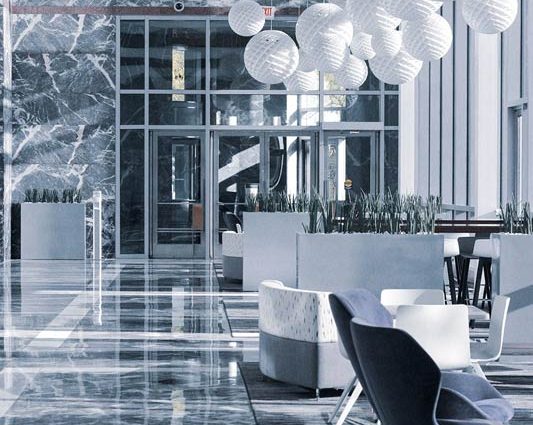Marble has long been celebrated for its timeless beauty and luxurious appeal in the realms of interior design and architecture. This natural stone, with its unique veining and array of colors, exudes an elegance that has captivated designers and homeowners alike for centuries. From the grand halls of ancient palaces to the sleek interiors of modern homes, marble remains a symbol of sophistication and style.
The versatility of marble is one of its most compelling attributes. It finds its place not just in grandiose architectural structures but also in everyday spaces. Whether it’s the cool, classic look of marble flooring, the sleek sophistication of kitchen countertops, or the decorative finesse of accent pieces, marble has the ability to transform any space into a vision of luxury.
But how does one incorporate this exquisite material into their spaces effectively? How can marble be used to not just add a touch of elegance but to create an ambiance that is both luxurious and welcoming? This is a question that intrigues many who appreciate the finer things in life. As we explore the use of marble in various applications, we uncover the secrets to harnessing its beauty to elevate spaces, striking the perfect balance between opulence and tastefulness.
The Allure of Marble
The history of marble in design stretches back to ancient civilizations, where it was prized for its beauty and grandeur. Today, its popularity endures, thanks in part to its unique aesthetic qualities like distinctive veining, a spectrum of colors, and a tactile texture that captivates the eye. Marble’s psychological impact in creating a luxurious ambiance is undeniable; it speaks to a sense of timelessness and refinement that few other materials can match.
Types of Marble and Their Characteristics
When selecting marble for your space, it’s crucial to consider not just the visual appeal but also the marble’s characteristics in relation to your space’s functionality. Some marbles are more porous and may require more maintenance, while others are more durable and suitable for high-traffic areas. Understanding these aspects will ensure that the marble not only enhances the beauty of your space but also serves its intended purpose effectively.
- Carrara Marble: Originating from Tuscany, Italy, Carrara marble is often regarded as one of the most elegant marbles. It features a soft white background with subtle blue-grey veining, imparting a serene and classic appearance. This marble is perfect for spaces where you want to achieve a light, airy feel without overwhelming the area. It’s commonly used for bathroom vanities, backsplashes, and as a material for statues and sculptures due to its workability.
- Calacatta Marble: Also hailing from Italy, Calacatta marble is rarer and is often considered a luxury stone. It’s known for its bright white background and dramatic, bold veining that ranges from gold to gray. Each slab of Calacatta marble is unique, making it a popular choice for statement pieces like kitchen islands, dramatic flooring, and wall cladding in more luxurious interiors.
- Statuario Marble: Another exquisite Italian marble, Statuario is renowned for its striking and distinctive veining. The veins are more pronounced and darker than those in Carrara, making it a standout feature in any space. It’s an excellent choice for focal points like fireplace surrounds or dramatic entryway floors.
- Emperador Marble: Originating from Spain, Emperador marble comes in various shades, from light to a rich, deep brown. It’s characterized by its contrasting veins and fine grains. Emperador is often used in combination with lighter marbles and is ideal for creating a warm, inviting ambiance. It’s commonly used in bathrooms, flooring, and as decorative accents.
- Crema Marfil Marble: This Spanish marble is known for its creamy, beige tone with subtle veining. It’s a versatile marble that can blend seamlessly with various color palettes, adding a touch of understated elegance. Crema Marfil is ideal for large areas like flooring in living spaces or as bathroom tiles where a softer, more neutral look is desired.
- Green Marble: As the name suggests, this marble comes in shades of green, ranging from light to deep hues. It often contains patterns and veins in contrasting colors, making it an eye-catching option. Green marble is perfect for adding a touch of nature-inspired elegance to a space and is often used in bathrooms and as decorative elements.
Black Marble: For those seeking a bold and sophisticated look, black marble is an excellent choice. Varieties like Nero Marquina offer a deep black background with striking white veins. Black marble is perfect for creating a luxurious and dramatic effect, commonly used in countertops, flooring, and as accent pieces.
Incorporating Marble in Interior Design
Marble’s versatility allows it to shine in various spaces – from the grandeur of kitchen countertops and bathroom vanities to the subtle elegance of living area accents and entryway floors. In larger installations, marble can be the centerpiece, while in smaller touches, it adds a note of luxury. The key is to achieve balance, allowing marble to stand out while harmoniously blending with other materials and textures.
Caring for Marble Surfaces
The maintenance of marble is critical to preserve its beauty and longevity. It’s vulnerable to staining and scratching, but with the right care, these challenges can be mitigated. Regular cleaning, careful sealing, and prompt attention to spills can keep marble looking pristine. Remember, the longevity of marble isn’t just about durability; it’s about preserving its elegance over time.
Marble in Contemporary vs. Classic Design
Marble’s adaptability across various design themes is part of its charm. In contemporary settings, it can be paired with modern elements and technologies, creating a fusion of the traditional and the new. Conversely, in classic designs, marble reinforces a sense of time-honored elegance. The key is to understand how marble can complement different styles, whether through bold modern contrasts or as part of a more cohesive, classic aesthetic.
Cost Considerations and Alternatives
Incorporating marble into a design project is undoubtedly an investment. For those mindful of budget, alternatives like engineered stone or marble-look tiles can offer the marble aesthetic at a more accessible price point. These alternatives can be especially useful in high-traffic areas where durability and cost are significant considerations.
Sustainability and Ethical Sourcing
The beauty of marble should not come at an environmental or ethical cost. Sustainable use of marble involves considering the environmental impact of quarrying and prioritizing ethical sourcing practices. Reclaimed or recycled marble offers an eco-friendly alternative, allowing the beauty of the stone to be enjoyed without further impacting the environment.
Conclusion
Marble remains a timeless choice for those looking to add a touch of luxury and elegance to their spaces. Its versatility, historical significance, and unique beauty make it a favored material in a wide range of design projects. When opting for marble, it’s essential to consider not only its aesthetic appeal but also practical aspects like care, cost, and sustainability. Whether you’re aiming for a bold statement or a subtle hint of luxury, marble’s elegance can elevate your design project to new heights of sophistication.

